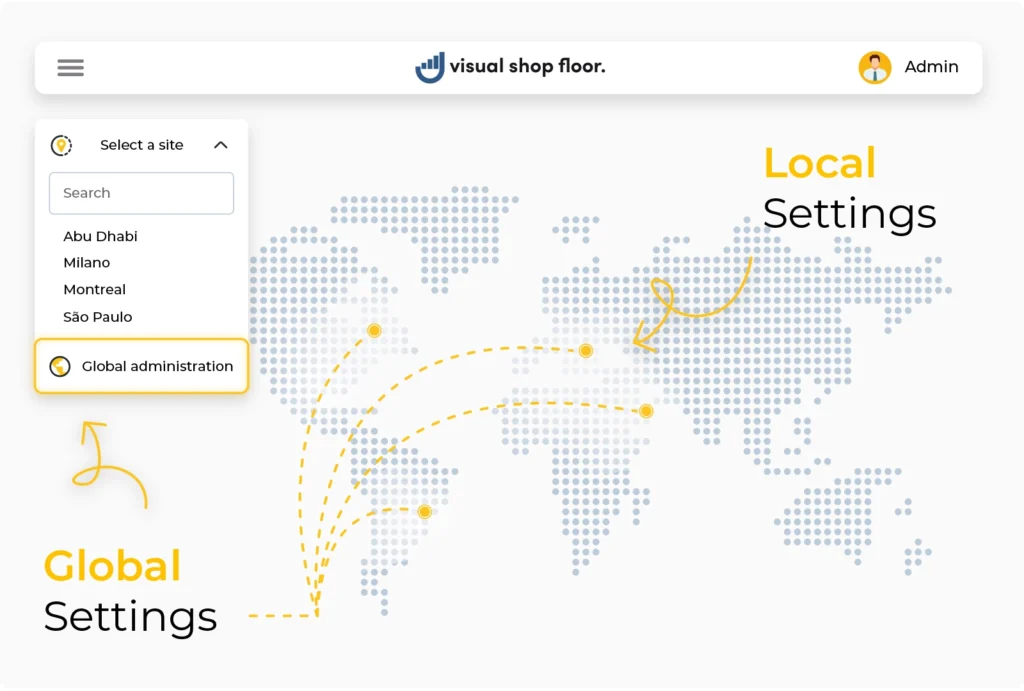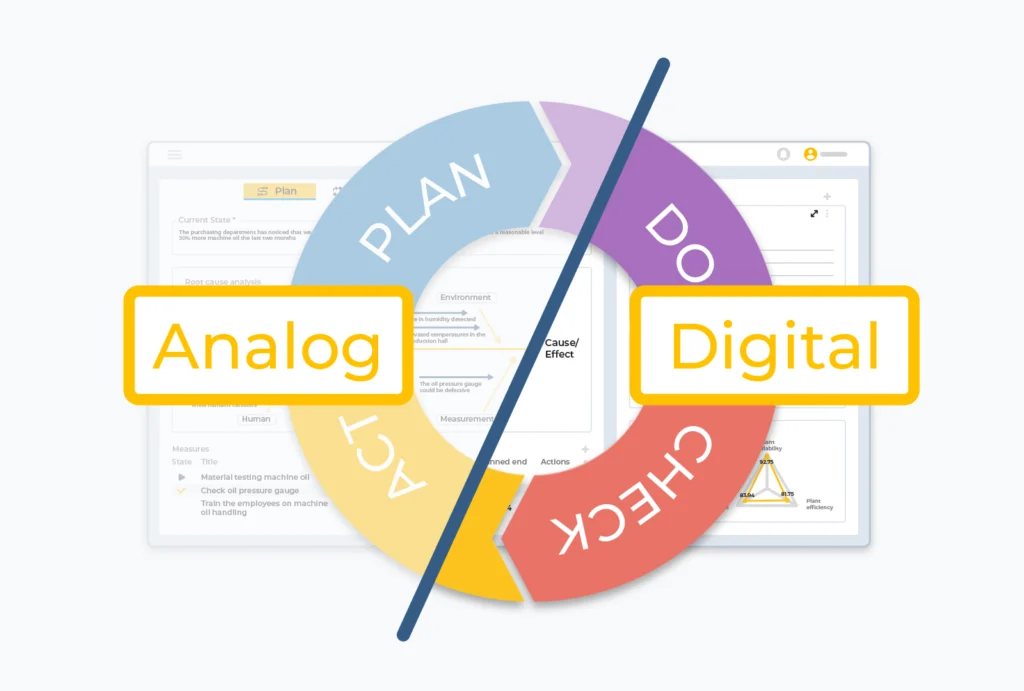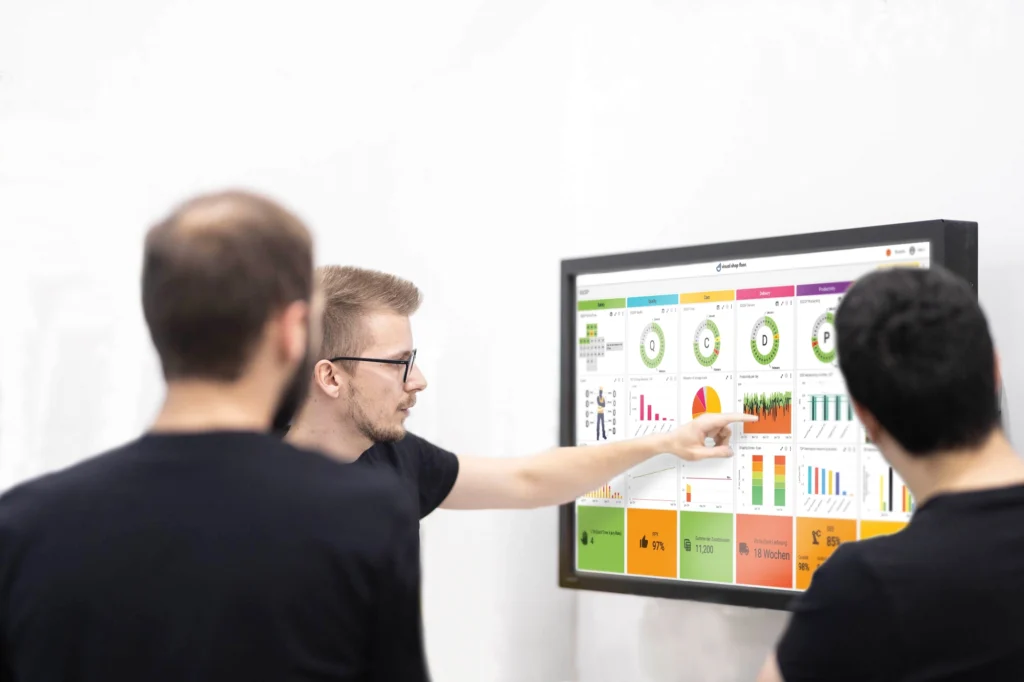Visual Shop Floor is utilized across various industries by medium-sized and large industrial companies to optimize production and logistics processes. Many of these enterprises operate multiple sites. To ensure transparency and consistent standards across all locations, Visual Shop Floor has always facilitated structured mapping and representation of individual sites within a centralized system installation.

Global and local settings in Visual Shop Floor
What has changed and why is it important?
In the latest version, we have implemented numerous improvements that allow clear separation between global, cross-site resources and local, site-specific resources, as well as general system settings. Resources include all units for data management (connections, data sources, data recorders, models) and other units such as widgets, dashboards, audit templates, or meeting templates.
Global resources
Global resources are centrally managed and can be used across locations to ensure consistent and unified Shop Floor Management across multiple sites. This simplifies the implementation of corporate standards and maximizes efficiency at a global level. For instance, standardized dashboards or uniform KPIs can be developed centrally and deployed across all locations. Global resources thus support the uniformity and efficiency of corporate processes, reinforce corporate identity and ensure that all sites operate according to the same criteria and guidelines.
Local resources
Local resources are managed and adjusted directly at the site level to meet specific requirements. This enables flexible adaptation to local conditions and enhances on-site efficiency. For instance, individual dashboards or specialized KPIs can be created and implemented separately for each site. Local resources thus promote the autonomy of sites and provide the opportunity to address local peculiarities.
System settings
General settings within Visual Shop Floor, such as site and user management, permissions assignment, license management, and language settings, are centrally administered at the system level. This centralized administration ensures consistent handling of crucial administrative functions across all locations. By managing these settings centrally, it preserves system integrity and reduces administrative complexity, ultimately leading to improved efficiency.
-
The main advantages of global and local settings
01.
Easy and intuitive management of multiple locations in a central installation02.
Standardization of Shop Floor Management through the use of standards and templates across multiple sites03.
Central and efficient management of data, visualizations and templates04.
Strict separation of data and management of access and visibility through a permission system05.
Decentralized creation and management of site-specific content


